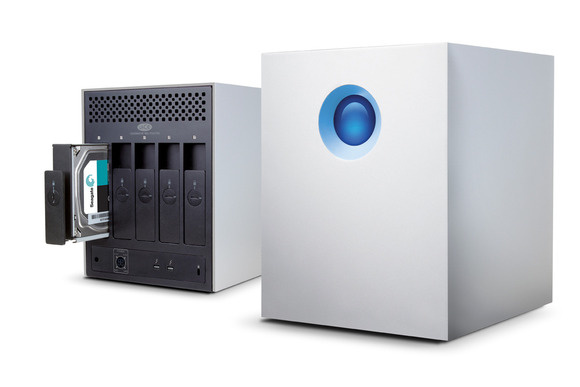The RAID system is the simultaneous use of disks to secure the datas, or increase the reading/editing performances. This technology is 30 years old ! RAID stands for Redundant Array of Independent Disks.
RAID 0
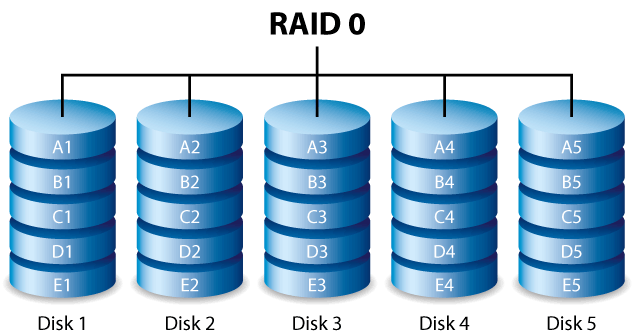
RAID 0 benefits from the sum of ready and writting speed of every disk. It is extremely fast. But if one disk fails, you lose every thing. So it is not very secured.
RAID 1
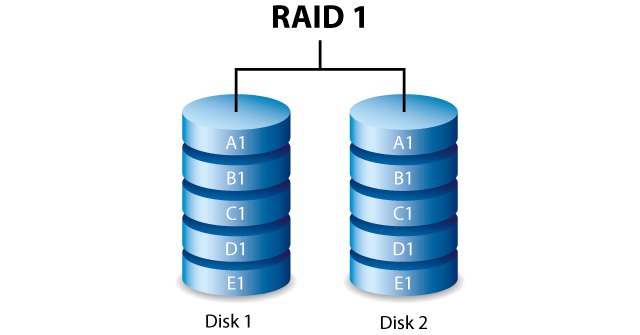
In RAID 1 the speed of reading/writting is from the slowest disk. It is not very fast. You loose your data if both disks fail. It it very secured.
RAID 5
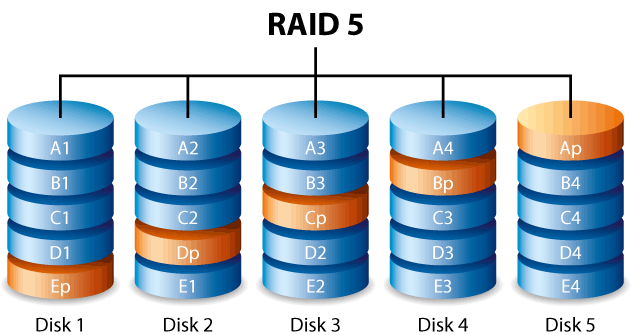
RAID 5 benefits from the speed of reading/writting of almost every disk (-1). It is very fast. It allows one disk to fail. It is secured.
RAID 6
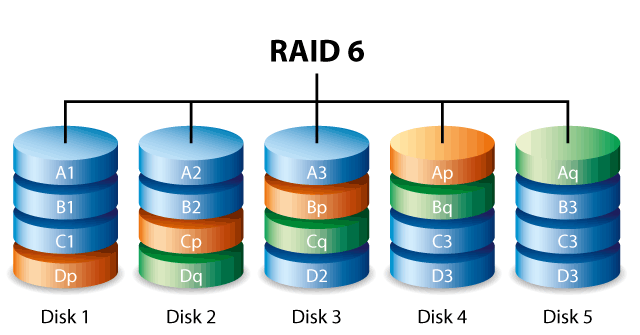
RAID 6 benefits from the speed of reading/writting of almost every disk (-2). It is fast. Allows 2 disks to fail. Very secured.
JBOD
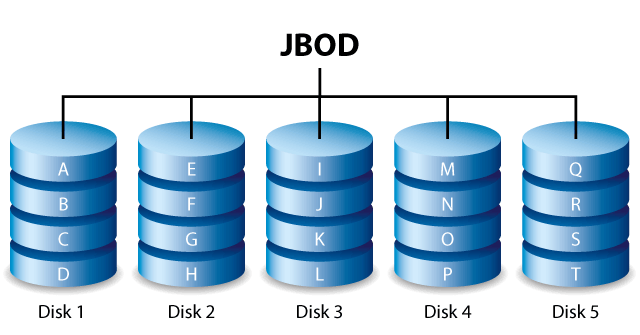
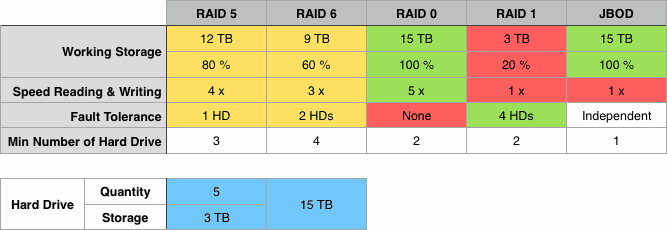
RAID controller is either hardware (microchip) either a software (here et here)

